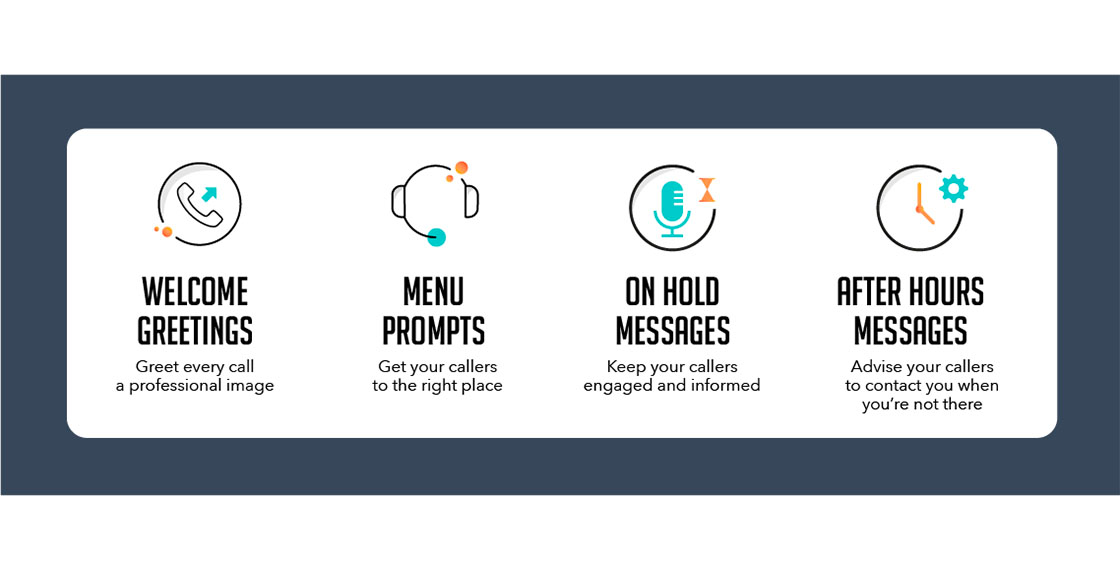Summary
- What is a call volume spike?
- Why do call volumes vary?
- How can you manage human resources around call center spikes?
- How can you use call center technology to manage unexpected volumes?
- Reminder: unexpected call volumes can happen at any time
- Need tips on dealing with call volume spikes at your call center?
Despite the rich functionality available on the technology front within your Ringover call center suite, the humans involved in the conversation do not have the same automated scaling features — and that includes the humans both making and answering the call. When those two groups get out of sync, it spells trouble. Over-scheduling agents for a quiet shift costs you in wasted resources, but when you have unanticipated peaks in your incoming call volume the consequences can be far more expensive. In this article, we will share all you need to know about dealing with unexpected bursts in your call volumes.
What is a call volume spike?

A call volume spike, also called high call volume, is when the number of calls reaching your call center suddenly increases above the regular volume that it usually handles. This dramatic increase in calls can be a short-lived event or can last for several hours, days or even weeks. Most research indicates the industry standard of high call volume to be 10 times above the normal rate of inbound calls
Why do call volumes vary?
Every call center deals with peaks and troughs, and the art of call center management requires dealing with this variability on a daily basis. After all, it’s those complex and irrational humans who are at the heart of it.
Predictable call volume variance
Some of your call volume variance will be easy to predict based on historical data. If you operate a consumer-focused ecommerce business, then of course you’re going to see spikes of orders during the holiday season. You can look at data from previous years and staff up accordingly. Or maybe you provide a complex B2B SaaS product, and you know that each major upgrade provokes a predictable flurry of support queries as users get to grips with the new features. “Not this time, we’ve totally nailed it!” Insist your product people… But the call center manager nods wisely and rosters on some more trained agents anyway, just in case — because the data doesn’t lie, and she knows that calls will increase anyway.

Other times you won’t have as much notice and data on your side, but you’ll still be able to predict an increase in calls incoming at least a little ahead of time — for example if extreme weather is predicted in a major delivery area, you can forecast a load of unhappy customers raining down on you when their packages don’t arrive. Perhaps you can quickly add some extra agents to the shift, so that their frustrations don’t escalate when they can’t get through to check on an order status or simply let off steam?
Unpredictable call volume variance
Other times though you will have no warning.A tropical storm changes course overnight, or part of your logistics infrastructure fails. A product develops an unexpected fault, or is impacted by an interdependent API or service falling over. Or maybe there’s a PR disaster in your business, or an urgent product recall in your supply lines… Whatever the cause, suddenly you’re dealing with way more calls coming in than you have agents to handle them, and that’s a big problem.Of course if you are using Ringover cloud-based call center software that is one of your problems solved, because you don’t have to worry about magicking up additional cubicles or endpoints to expand your call center provision. But you do have to consider what to do about your most important asset of all — your people. Not only is it difficult to scale them quite as easily as adding new accounts to your Ringover dashboard, they have human responses to external events too. And they may need additional support in dealing with customers who are already frustrated and upset, even before they experience a delay in response.
How can you manage human resources around call center spikes?
Motivate employees
Maintaining great working conditions and labor relations are the foundation for getting extra hands on deck fast, when unexpected disaster strikes. Depending on contractual details your call center agents may or may not have a choice about stepping up and giving you extra support — but far better that it’s done willingly out of loyalty, and that there’s a win-win through some kind of bonus or rate enhancement, if it means short notice or antisocial hours.
Communicate clearly
Transparent communications help a lot here. If there is a product problem, own it, and explain. Ask for volunteers before imposing contractual obligations, and remember to thank those who raise their hand. Everyone will be motivated if they see managers and supervisors pitching in, proving that we really are ‘all in this together’. Celebrate when the literal or metaphorical storm passes, and reward those whose efforts made the difference.
Empower remote agents
If you’re operating a fully remote call center using Ringover’s entirely cloud-based system, you can anticipate a bit more flexibility from your team. And you can let them use their preferred device, so they could have overspill calls diverted to a personal mobile number for emergency coverage, knowing they can return to their home-office if required, but otherwise able to spend time with their family in the normal out-of-hours period.
Cross-train staff
You might even be able to cross train staff from other departments or business lines, to provide frontline reassurance to callers, at times of greatest strain, or have a back-up outsourced team to fall back on, depending on the nature of your operation and how specialized it is.
How can you use call center technology to manage unexpected volumes?
Remembering how important those human resources are though, you can use the technology available to you to protect their time and productivity effectively.
Mine your data to expect the unexpected
While truly black swan events do happen, and also call volumes vary for naturally unpredictable human reasons, it’s well worth taking a close look at your call center analytics in respect of previous volume spikes.By digging into the data in your call center metrics and elsewhere, you might unearth patterns you could easily overlook on the surface, and spot valuable insight, such as:
- Call volumes are always higher at the start of every month. Perhaps people want to shop after payday? You can staff around that accordingly.
- You get higher call abandonment on the late afternoon shift, suggesting caller patience is reduced, and effectively a lower volume of call increases should trigger a need to staff-up.
- Every February call volumes increase, but average call time is low — so there are no staffing implications.
- Post-call admin is significantly higher on calls tagged to a particular product line — so what can be streamlined here, to get your agents back answering calls more quickly?
- A perceptible ‘back to school’ effect increases your call handling time in the autumn, when you take on new hires and your users do the same. So, you can get ahead of this with additional training and planning.
- An ostensibly highly-profitable product promotion actually spiked your call abandonment rate despite increasing sales, so you could have handled that better with anticipation in the call center.
And so on. The point is, what looks like a random blip can often tell a tale, if you interrogate into the data and analytics sufficiently, even by bringing in external oracles and datasets if appropriate. Distinguishing valuable predictive insight from one-off situations is the key here, and will enable you to scale and respond faster when you spot warning triggers in the future.
Communicate proactively with customers in other ways
Those same transparency values which make you stand out as an employer will also serve you well as the provider of a product or service. If something unexpected happens, email is a quick way to get in front of it — explaining to customers that a dispatch center is closed due to storm damage, or a product is temporarily offline due to a data center fault, can be done very quickly. It’s far easier to explain once to your entire customer base in writing, than in thousands of individual phone calls, and people appreciate the consideration of being kept in the loop before they have to ask.

You can also consider a text message blast, making the best use of the speed and immediacy of push notifications, even if these have a direct cost to you — a customer waiting for their parcel to be collected will be less likely to bug your call center if you’ve sent them an explanation, followed up by regular updates.At times of high stress and urgency, omnichannel is your friend. Let customers find the right information in the way that suits them best — by ensuring your updates are disseminated across your web properties, social media accounts, and anywhere else you are present online.
Use your IVR to get callers out of the queue
There are various ways you can use your interactive voice response (IVR) to get callers out of your call queue and satisfy their inquiries in alternative ways.For example, in the face of external events like a weather crisis or terrorist threat, a proportion of incoming calls will be seeking either information or reassurance, and this can be provided in a satisfactory way by a recorded announcement — a brief and professional update recognizing the unusual circumstances, and responding with empathy/concern/confidence as appropriate, to address your customers needs.You can use your IVR message to apologize in advance for the fact their call is taking longer to answer, and to provide them alternative routes to resolving their query — anything to get them out of the line, and intending to take up a live agent’s time and attention. “Please see our homepage for all the latest updates about the downtown distribution center, and register for SMS service alerts in real time”.

If an unexpected issue is stopping more routine calls — including your VIP sales prospects — reaching your regular numbers, you can use your IVR to re-route those inquiries fast, because it’s easy to edit your response tree directly in the Ringover console, and provide a timely and relevant response. “If you’re calling in response to the present inventory updating issue, please click 1 for further information. For all other inquiries, please remain on the line.”
Augment your human agents
You can use your call center software’s native integrations to support your agents, particularly through extra stressful shifts where they are bombarded with a high volume of calls.For example, there might be issues with a particular product line impacted by a fault, and natural language processing can listen for triggers in the conversation, and serve up the relevant support information. This reduces overall call time because your agent doesn’t have to hear and process the request at human thinking speed, then go away and look it up in a knowledge base. A smart bot can deliver it right when they need it instead, reducing stress for the agent, and making them look super-smart in the eyes of the caller — wow, this guy really knows about this product, he’s helped me straightaway with the exact information I needed! Your response time stays high, and first call resolution goes up to the max.Such technology can also be used to monitor the wellbeing of agents, especially on distributed teams. Being alert for escalating emotions, inappropriate language (from either party), or heightened tension on the call, can discreetly get the attention of a supervisor in real time. Ringover’s call center monitoring tools enable them to secretly ‘whisper’ support and advice to the agent, to jump into the call directly, or even intervene to take it over completely.
Automate processes
Finally, while your call volume may be spiking because people want the reassurance of speaking to a live human agent, many will be satisfied with finding that reassurance through facts, or the responses of an automated bot — provided it meets their informational needs.For example, you might be simply unable to push out order status updates to every customer in an email during a crisis, and some aren’t even late yet anyway. But you could spin up a bot which enables customers to self-service and locate that information for themselves at the moment they need it — handy if they’re woken by a hurricane, and start fretting about their expected delivery in the morning.You can offer this intervention everywhere — on your homepage, via email, but most importantly at the top tier of your IVR: if you’re calling to check on the status of a delivery scheduled within the next 48 hours, please have your order reference to hand, and click 2 now.Don’t forget to offer a route back to the main queue for anyone who gets stuck, frustrated, or confused, or simply needs the reassurance of a human voice to close the loop.
Reminder: unexpected call volumes can happen at any time
If 2020 taught us anything, it is to expect the unexpected. Businesses which thrive in conditions of change and crisis are those who demonstrate resilience, foresight, agility, and responsiveness. Your call center is a part of that response, and by adopting a pragmatic approach to serving your customers, you can rise to the challenge of unexpected call spikes in an appropriate way, one that even enhances your reputation for customer service when it is most urgently needed. People forgive a lot of problems, when they can see the intention behind an effective response.Fostering a culture of transparent and authentic communication, alongside a genuine good intent, will go a long way — to enabling your team, and reassuring your customers, whatever the circumstances.
Need tips on dealing with call volume spikes at your call center?
Contact our experts to help guide you step-by-step at +44 20 3808 5555 or send an email to sales@ringover.com. Start your free trial today.


